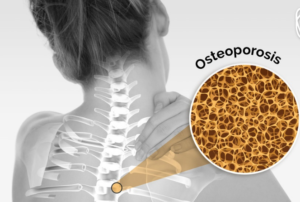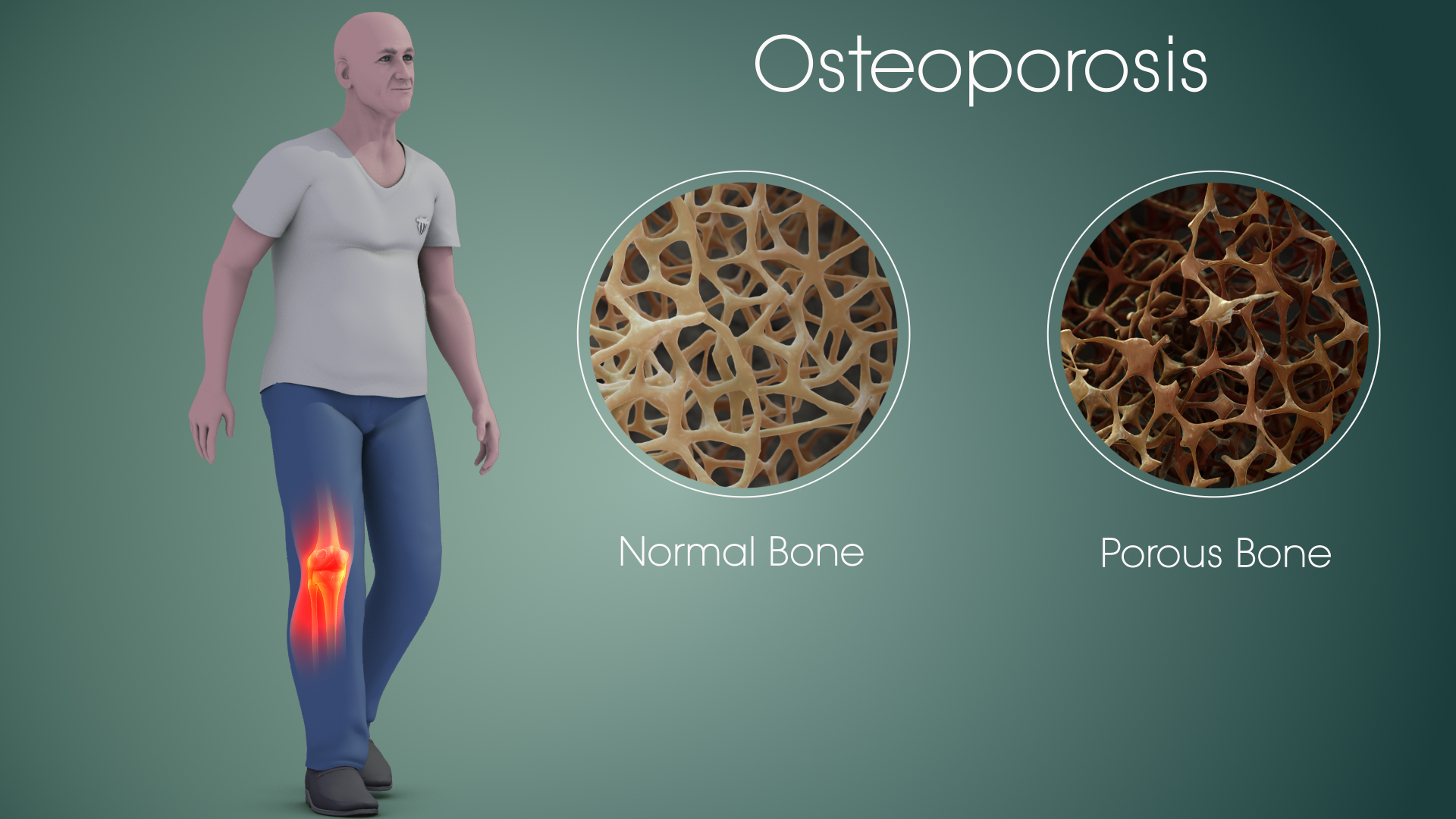 What is Osteoporosis?: We can define osteoporosis as a disease that mainly affects the bones. People who suffer this disease lose bone tissue (bone mass), so that the bone becomes more porous, with more air inside. Besides, osteoporosis has the potential to change the normal structure of the bone. It augments the number and size of the cavities or cells that lie inside of it. As a consequence, the bones become more fragile so they resist the blows worse and they break with ease.
What is Osteoporosis?: We can define osteoporosis as a disease that mainly affects the bones. People who suffer this disease lose bone tissue (bone mass), so that the bone becomes more porous, with more air inside. Besides, osteoporosis has the potential to change the normal structure of the bone. It augments the number and size of the cavities or cells that lie inside of it. As a consequence, the bones become more fragile so they resist the blows worse and they break with ease.
This pathology is asymptomatic and can go unnoticed for many years until it finally manifests with a fracture.
Related article: What are the symptoms of osteoporosis?
How frequent is osteoporosis?
The prevalence of this disease increases with age and is more common in women, particularly postmenopausal women. About 20% of women who are between 50 and 84 years old suffer from osteoporosis.
It is worth mentioning that men can also get osteoporosis, especially if they are old.
Women are more susceptible to osteoporosis for many reasons: their peak of bone mass is usually lower than that of men, and with menopause bone loss accelerates (postmenopausal osteoporosis).
About the bone mass
Bone mass is the amount of bone that a person owns in the skeleton in a moment of life and it depends on many factors. Factors such as age, sex, and race.
Inside the bone, various metabolic changes occur, alternating phases of bone destruction and formation. These phases are controlled by different hormones, physical activity, diet, toxic habits, and vitamin D, among other factors.
Under normal conditions, a person reaches at 30-35 years a maximum amount of mass bone (peak bone mass). So, around the third decade, there is a natural loss of bone mass. However, there are several things you can do in order to avoid osteoporosis.
Related article: How can I avoid osteoporosis?
Which are other causes?
There are many other frequent causes of osteoporosis. They are alcoholism, drugs (glucocorticoids, hormone treatment used for management of breast and prostate cancer…), rheumatic, endocrine, hepatic inflammatory diseases, renal failure, among others.
Types
There are different types of osteoporosis:
Postmenopausal osteoporosis: The main cause is the lack of estrogen (a hormone). In general, symptoms appear in women who are 51 to 75 years old, although they can begin before or after those ages.
Senile osteoporosis: It is the result of an age-related calcium deficiency and an imbalance between the rate of degradation and bone regeneration. It usually affects people over 70 years old and is twice as common in women as in men.
Secondary osteoporosis: It can be a consequence of certain diseases, such as chronic renal failure and certain hormonal disorders, or the administration of certain drugs, such as corticosteroids, barbiturates, anticonvulsants and excessive amounts of thyroid hormone.
Diagnosis
At present, bone densitometry is the best technique that exists to measure bone mass, although specialists point out that there are exceptions.
Based on current knowledge, the diagnostic approach should be carried out individually assessing the age and other risk factors.
Risk factors such as tobacco and alcohol consumption, low weight, family history of osteoporotic fractures, among others, allows us to identify people who are at risk of developing the pathology. Therefore, the fundamental basis of the diagnosis is based on clinical suspicion.
At the London Spine Unit, we have some of the best specialists to diagnose and treat osteoporosis. Book an appointment to get a checkup.

